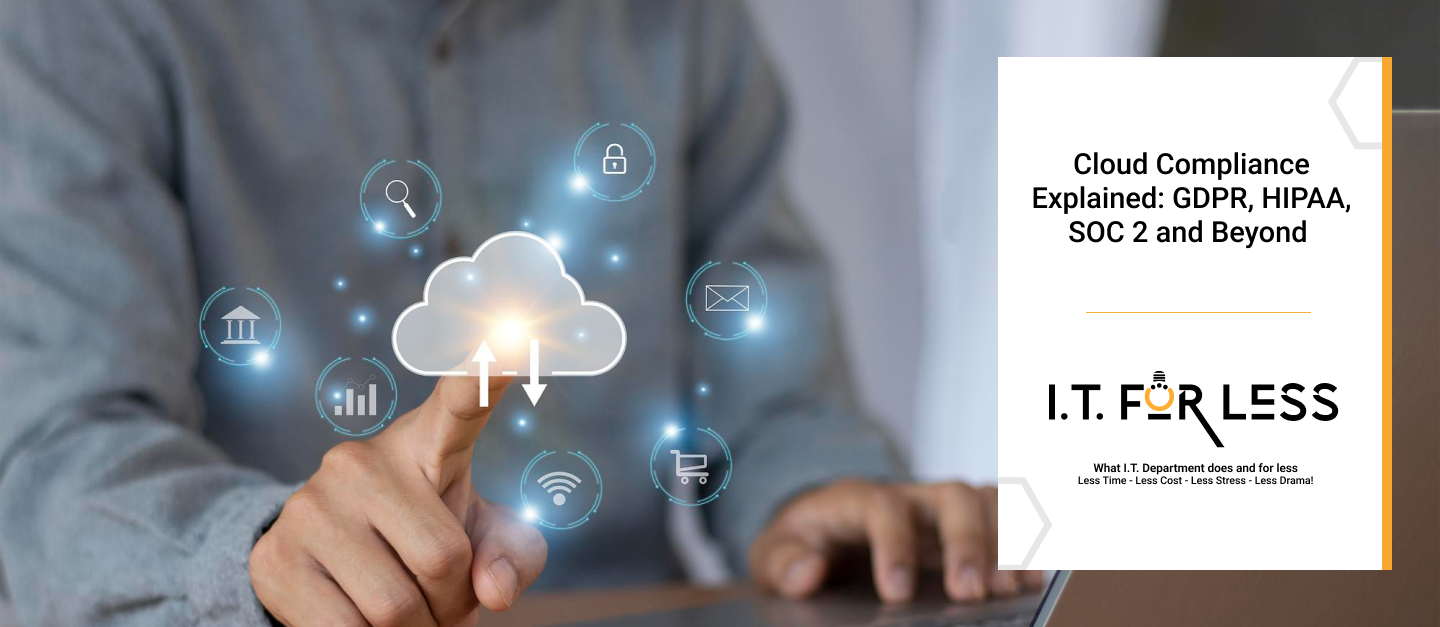As more organizations migrate critical workloads to the cloud, compliance has become one of the most pressing concerns. Regulatory frameworks aren’t just legal requirements—they’re essential for maintaining customer trust and protecting sensitive data. But cloud compliance is complex, especially when navigating multiple standards like GDPR, HIPAA, and SOC 2.
Let’s break down what each means in the context of cloud environments—and how businesses can prepare for “beyond compliance” in 2025.
GDPR (General Data Protection Regulation)
- Applies to: Any organization handling the personal data of EU citizens.
- Focus: Data privacy, consent, and the right to be forgotten.
- Cloud impact: Cloud providers must support data residency requirements, encryption, and mechanisms for data subject requests. Businesses are accountable for ensuring their configurations and practices meet GDPR standards.
HIPAA (Health Insurance Portability and Accountability Act)
- Applies to: Healthcare providers, insurers, and business associates handling Protected Health Information (PHI).
- Focus: Safeguarding patient data through administrative, technical, and physical safeguards.
- Cloud impact: Cloud vendors must sign Business Associate Agreements (BAAs) and provide HIPAA-compliant hosting. Customers are responsible for access controls, data encryption, and monitoring.
SOC 2 (System and Organization Controls 2)
- Applies to: Service organizations managing sensitive customer data.
- Focus: Trust principles—security, availability, processing integrity, confidentiality, and privacy.
- Cloud impact: A SOC 2 report assures customers that the provider follows rigorous security and compliance standards. Companies using cloud services must still enforce their own controls for access and data management.
Beyond Compliance: What’s Next?
In 2025, compliance isn’t just about avoiding fines—it’s about resilience and trust. Emerging frameworks (like ISO 27701 for privacy or FedRAMP for government data) are expanding expectations. Businesses that embrace automation, continuous monitoring, and zero-trust architectures can stay ahead of both regulators and attackers.
Best Practices for Cloud Compliance
- Understand which regulations apply to your industry and geography.
- Leverage automated compliance tools for real-time visibility.
- Maintain strong Identity and Access Management (IAM).
- Encrypt sensitive data at rest, in transit, and (increasingly) in use.
- Regularly audit and update policies as regulations evolve.
Final Thoughts
Cloud compliance is no longer a one-time checkbox—it’s an ongoing process. By understanding frameworks like GDPR, HIPAA, SOC 2, and preparing for emerging standards, businesses can build a cloud strategy that protects data, earns customer trust, and ensures long-term resilience.
Partner with I.T. For Less today and take the first step towards making your I.T. flow as effortlessly as your ambition.
